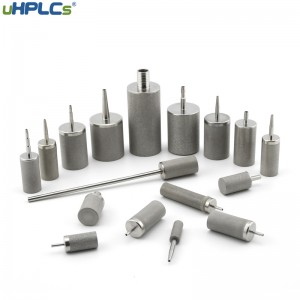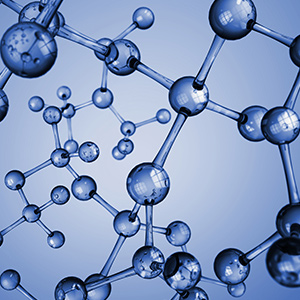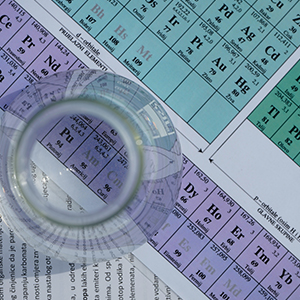High-performance liquid chromatography is a widely used analytical separation technique for quantifying, identifying, and separating the components of non-volatile liquid mixtures. The sample passing through the pores is called the “mobile phase.” When the mobile phase reaches the stationary phase, the larger molecules are intercepted by, the smaller pores, allowing the smaller molecules to elute faster and better, which is the separation process. This results in smaller molecules having faster retention times, and the longer the molecule stays in the column, the wider the peak on the chromatogram.
Solvent filters are commonly used in chemical laboratories, mainly for HPLC mobile phase filtration, particle matter analysis, microbial contamination detection, etc. They are also commonly used in chemical laboratories. HPLC Inlet Solvent Filters can protect HPLC systems from small particles in the mobile phase. The solvent inlet filter is made of 316 stainless steel, suitable for most solvents, easy to install and use, easy to maintain, and has good assemblability.
HPLC is mainly divided into 3 types: normal-phase HPLC, reversed-phase HPLC, and ultra-high performance liquid chromatography.
I. Normal-phase HPLC
Normal-phase HPLC is not the most commonly used method, which uses a non-polar solvent as the mobile phase and silica particles as the stationary phase. In normal HPLC, polar compounds have a longer adhesion time to polar silica in the stationary phase than non-polar compounds. Therefore, non-polar compounds elute more quickly in normal HPLC.
II. Reversed-phase high-performance liquid chromatography
Reversed-phase HPLC is the most common type. In reversed-phase HPLC, the stationary phase is modified by hydrocarbon chains which cause the column to become non-polar. The polar molecules will be attracted to the solvent and thus will elute more quickly.
III. Ultra-high performance liquid chromatography
Ultra-high-performance liquid chromatography runs faster, uses less solvent, and has a higher resolution than high-performance liquid chromatography. The liquid chromatography column is smaller, so the size of the stationary phase particles is also smaller. Smaller pores promote better molecular separation, and shorter columns allow faster detection. However, UHPLC cannot be used for dry or unfiltered samples because the smaller pores can clog.
uHPLCs C18 column adopts high purity silica-based spheres with highly homogeneous particle size and precisely controlled particle size and pore structure. At the same time, the advanced and mature surface bonding and complete capping process minimize the activity of silica hydroxyl groups, which can be applied to the separation of analytes with different hydrophobicity and is a versatile silica column. It has excellent chromatographic performance, good selectivity, good reproducibility, and a wide range of applications.
The knowledge shared by uHPLCs today is here. First, I hope it will help you in your work!
Post time: Sep-28-2022









